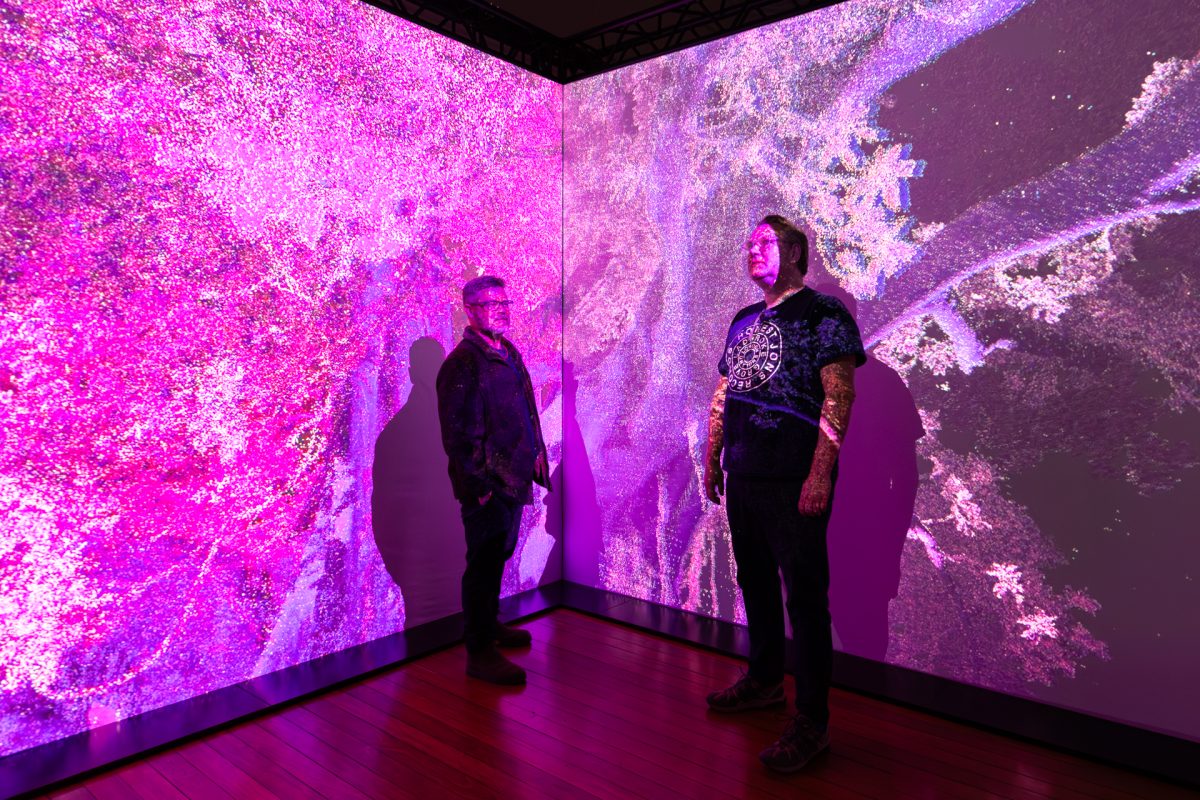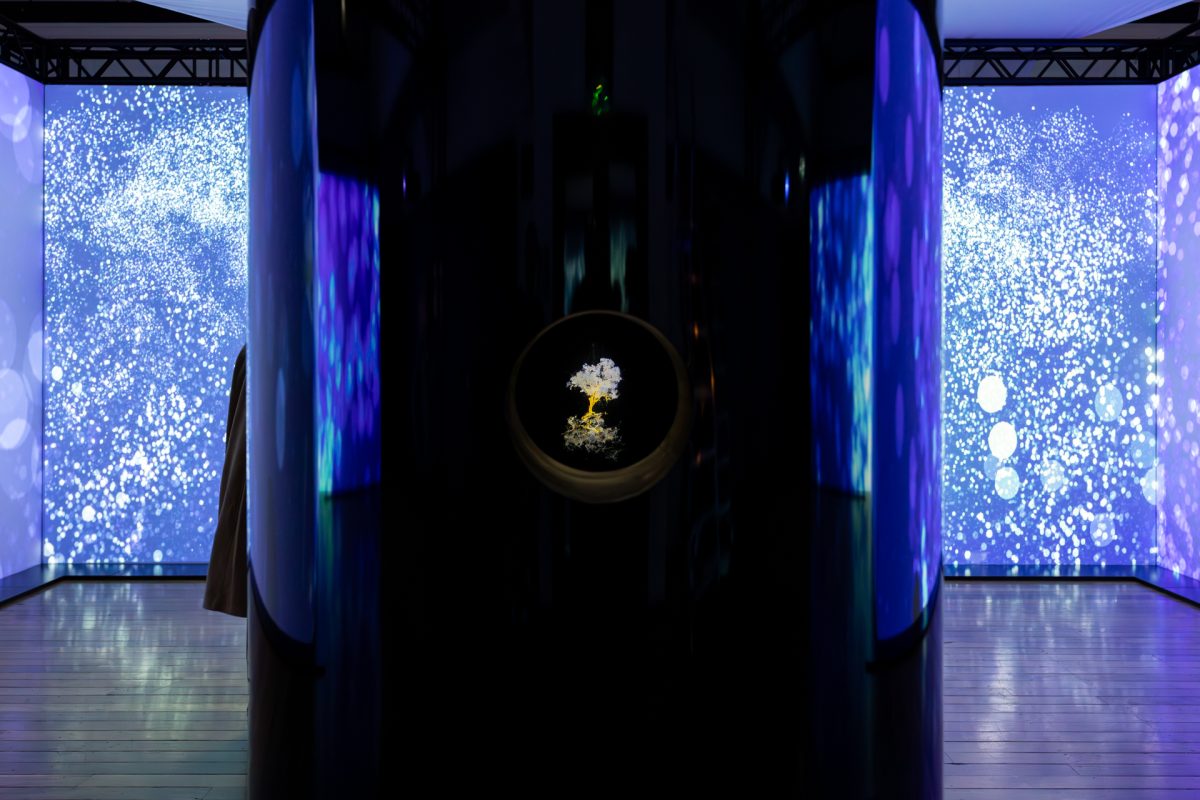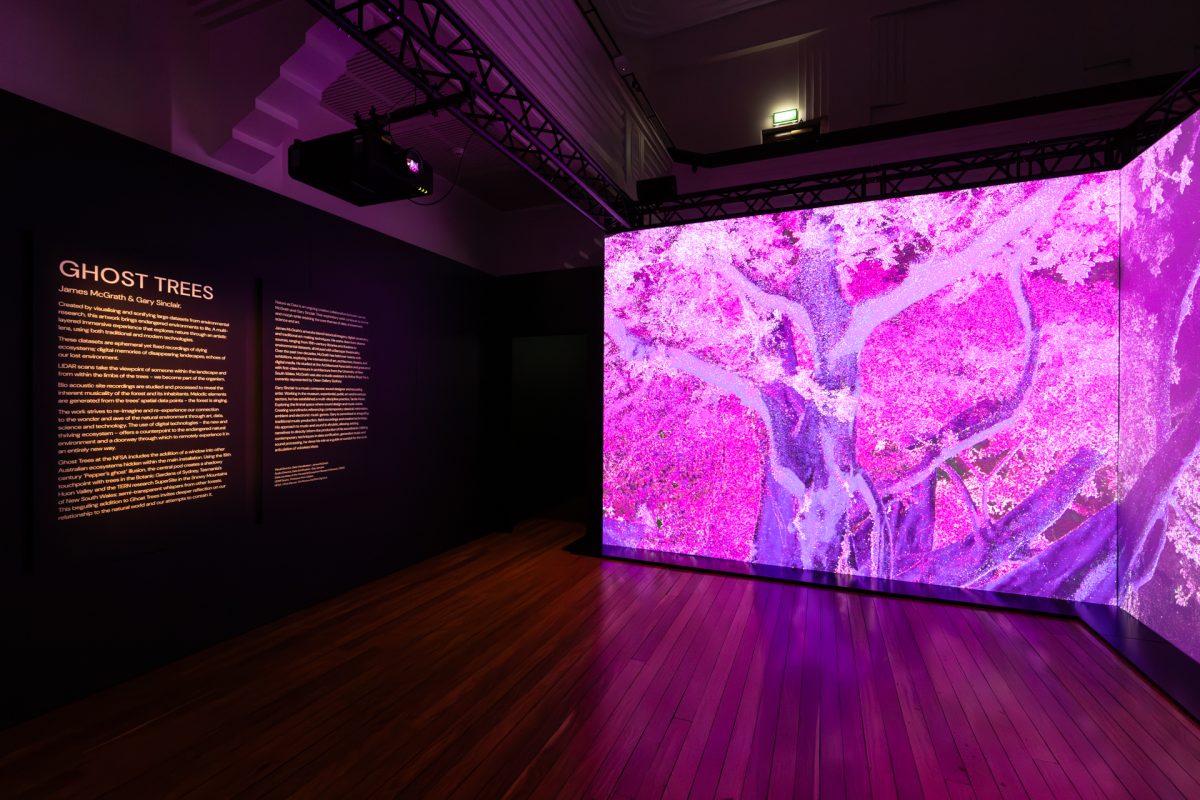
Artists James McGrath and Gary Sinclair were at the NFSA to complete the installation of their work, Ghost Trees. Photo: Michelle Kroll.
Science, art and the modern digital world come together in a unique audio-visual installation that is now open at the National Film and Sound Archive (NFSA) in Canberra.
To mark Science Week 2024, the Ghost Trees installation was created by Australian artists James McGrath and Gary Sinclair.
Four years in the making and appearing across seven screens via 14 projectors in the NFSA gallery, the work invites its audience to step inside the “digital memory” of an endangered forest and connect with it.
The aim, its creators say, is to explore nature through a creative lens – using both traditional and modern technology.
This is a natural tie-in with the work of the NFSA with its remit for preserving, maintaining and promoting the nation’s collection of film, radio, sound and TV material – from our first days to today.
Ghost Trees offers a 360-degree perspective on the Rushworth Forest on the lands of the Ngurai Illum Wurrung people in Victoria, developed from environmental data captured for the Terrestrial Ecosystem Research Network (TERN) by Professor Kim Calders from Ghent University in Belgium.
James McGrath created the visuals from TERN’s three-dimensional light detection scans, while Gary Sinclair’s surround-sound audio draws on eco-acoustic recordings, with melody generated from the spatial data points of the trees.
The result, the artists say, is an “ephemeral, artistic and moving convergence of art and data that paints a compelling portrait of what we are losing from the natural world”.
It’s a new way, the creators say, to connect with nature – through the tree canopy, underground or by looking up at the ancient trunks.

There’s a special viewing area to see right into the Ghost Trees installation. Photo: Michelle Kroll.
Speaking at the NFSA on Thursday (8 August) as the show was being installed, the artists described the art-deco-style Canberra building, the former Australian Institute of Anatomy building, as the perfect place to showcase the installation “to engage with real-world scientific data at a visceral and imaginative level”.
“Yes, it’s about making science sexy again,” Mr McGrath said, “but it is more than that. It shows a serious side of what is happening with the environment.
“Think about if a fire goes through a forest, that forest is gone. This is all about keeping our environment in the digital memory.”

Ghost Trees, now on show at the NFSA in Canberra, is an audio-visual feast for the senses – with an important message attached. Photo: Michelle Kroll.
Chief Experience Officer at the NFSA, Chris Mercer, said the work sat at the intersection of art, science and technology.
“Ghost Trees exemplifies how the arts can be used to create connections, share knowledge, inspire conversations and drive collaboration towards a more sustainable future,” he said.
It follows the popular Temple installation at the NFSA, which was created by Leila Jeffreys and Melvin J Montalban, and was dedicated to native Australian birdlife.
Mr Mercer said immersive experiences like Temple, and now Ghost Trees, reflected the NFSA’s broader commitment to sustainability, which includes curating events and programming that bring people together to learn, reflect and be inspired to take action.
Ghost Trees opens at the National Film and Sound Archive, Canberra, on Saturday, 10 August, and runs until Sunday, 8 September. Open daily from 10 am to 4 pm. Entry is free.
Original Article published by Sally Hopman on Riotact.


